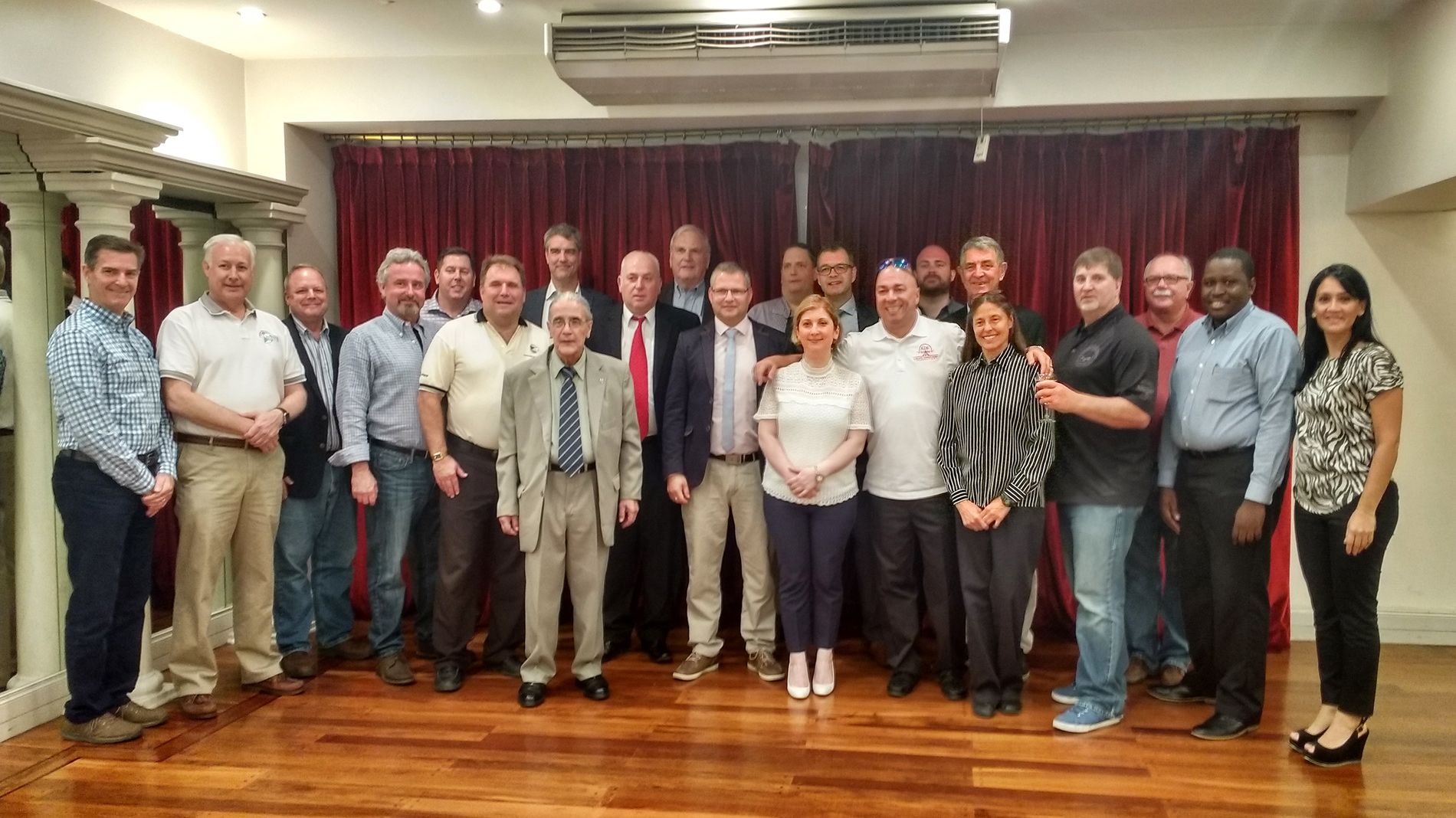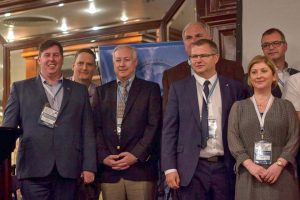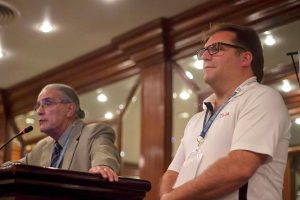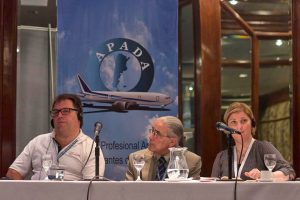-
Jun 04 2017 IFALDA Annual General Meeting, 2017
From the website of the Gacet Aeronautica (Aeronautical Gazette) in Argentina www.gacetaeronautica.com
Text by Pablo Luciano Potenze in Air Transport
(Original in Spanish – Translated by Dave Porter and Google Translate…errors in translation are mine…dp)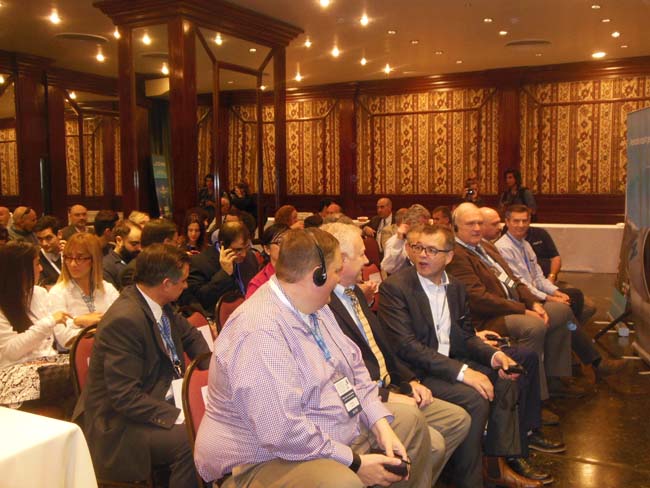
IFALDA Executive Board IFALDA, the association that brings together professional associations of aircraft dispatchers from all over the world, held its 56th annual meeting in the city of Buenos Aires, coinciding with the annual meeting of EUFALDA, its European counterpart. The meeting was organized by its Argentine correspondent, APADA, and was attended by representatives of colleagues from around the world.
The meeting lasted three days. In the first two, internal issues of the organization were discussed and its new authorities were elected, and the last day was reserved for a specialized conference, in which the Aeronautical Gazette was present.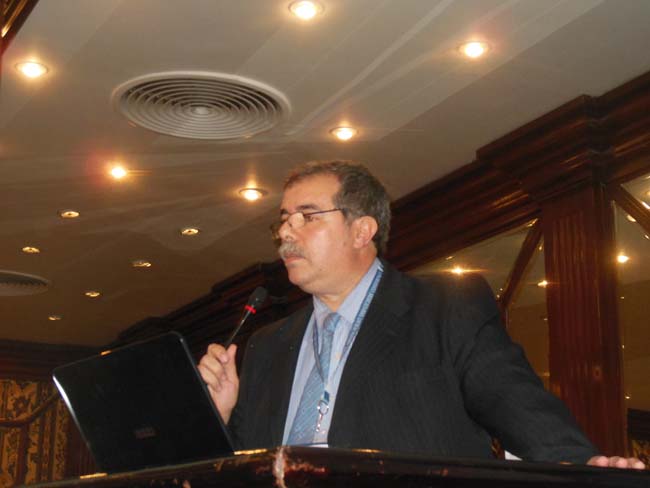
Gustavo D’Antiocchia, the president of APADA welcomed the attendees. Speaking next was the administrator of the ANAC, Juan Irigoin, who highlighted the great expectations of growth that has its administration, which aims to double the amount which will undoubtedly generate many new jobs, but will require improving infrastructure, competitiveness, technology and working together to implement best professional practices.
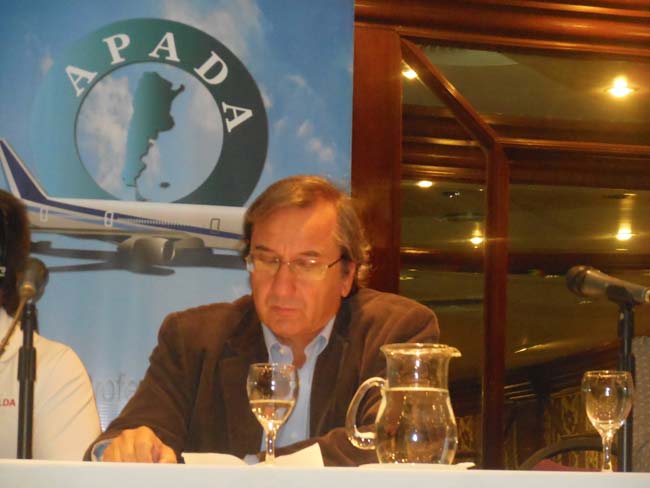
Juan Irigoin Licensed versus suitable
The first exhibition was in charge of the Mendocino lawyer Gustavo Maron, who entered fully in the conflict that lives the profession of the aircraft dispatcher with the appearance of the functions of ideal and the supervisor of charges, that try to replace to the categories defined in the ICAO standards.
He looked at the issue from a systemic approach, placing the problem within the set of ICAO standards, which he qualified as an integrated whole, without free components, to then disaggregate the concepts and find the point of equilibrium.
The figure of the aircraft dispatcher is integrated with the 19 ICAO Annexes. The first of these, on aeronautical personnel, requires the latter to have judgment or professional judgment, something that is formed by two things: ability to discern – identify options and choose the most appropriate – and ability to say no.
Gustavo Maron In his opinion, the problem began in 2012 when the concept of remote dispatch for airlines was updated, in which two new figures were introduced, the one of the ideal one and the one of the load supervisor, personnel instructed by the operator for the purpose of functions of Without a certificate of competence, without an enabling title and without defined limits.
In this way the system collapses, because very specific rules of ICAO and our Aeronautical Code, which require certification of suitability issued by the aeronautical authority to the personnel that perform aeronautical functions, are faced.
It is not defined who qualifies the suitability of these personnel, what are the minimum requirements of their instruction, why a psychophysical certificate is not required or if they are reached by the regime of aeronautical infractions.
And the last uncertainty is whether the insurers will pay for the episodes in which a suitable one has intervened. According to the exhibitor, behind this topic was Aerolineas Argentinas, initiator of the file that gave rise to this regulation, but added that the local company did not act independently, but this is the trend that comes from Skyteam and other alliances, Who are looking by all means to reduce their costs. He exemplified it by saying that the car was put on horseback here: the interests of the airlines in front of the ICAO regulations. His last words were to highlight the reaction of APADA, which managed to stop the application of this regulation.The position of the EANA
The EANA operational area manager, Esteban Manuel Mendoza, then began to discuss the evolution of aeronautical activity, both normative and technological, but at the heart of his presentation was the presentation of the EANA, a rapid history of traffic management Air in our country, which it defined as a succession of “error after error” very remarkable, which was set in 2015 with the creation of EANA, a company that sought from its origin “to bring about a change, a significant cimbronazo in this industry “.

Esteban Manuel Mendoza The presentation was institutional in nature, highlighting all that EANA has done since its inception, emphasizing a number of issues, including:
- Personal. A new collective labor agreement was signed (with ATEPSA), the roles and the career plan were defined and an important training work was carried out, which began at the CIPE and today reaches the entire country.
- Administration and management. A hierarchical structure was changed to another matrix and operational safety and quality management programs were implemented.
- Internal communication. The authorities of the company crossed all the airports of the network to know and to be known by their personnel.
- Investments. A process of modernization of airspace is in progress and it plans to change everything that has to do with communications and surveillance.
- Statistics. EANA has developed its own statistics system (see We have statistics).
He stressed that everything that is being done is done with the entire aeronautical community, which includes agreements with other countries. In relation to the previous exposure, he pointed out that the company accepts the suitors and cargo supervisors.
In general terms, it was a discourse aimed at promoting the company, with an almost advertising criterion. He dramatized the shortcomings of the inheritance he received (it can not be said, as he said, that in thirty years there were no investments in the area or that for lack of statistics “nobody knew anything.” The picture was complicated, but not scorched earth like Indian.
He also exaggerated when he spoke of the imprint that EANA had created in nine months in the aeronautical assembly of our country.
The second exhibitor of EANA was Silvia Beatriz García, head of AIS-COM of the company, who emphasized the importance of the aeronautical information that described saying that in addition to a data is a product.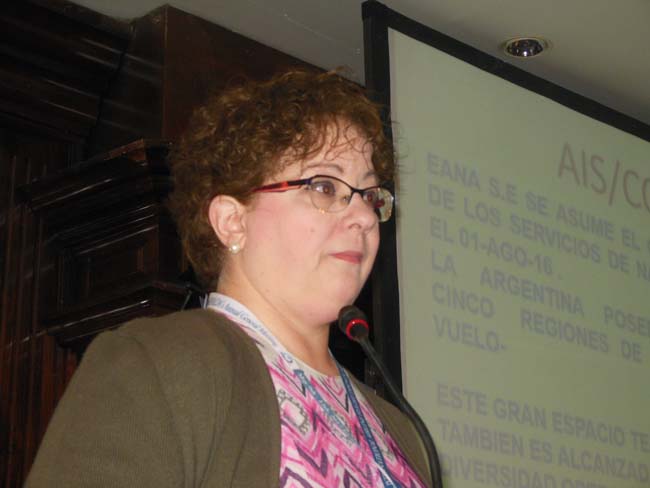
Silvia Beatriz García Her address was centered on two main themes. The first was the relationship between the EANA and the dispatchers and the necessary collaboration between both, adding that their company tries to contain the dispatchers with a close link.
She described the organization of the EANA, its investments and announced achievements to be made in the future, arguing that it is vital to generate a service so that the commander can enjoy the flight and the dispatcher make the plan safely.The second guiding theme was the enhancement of the EANA. It was difficult with regard to the state of ankylosis in which the sector was received (airspace of the seventies, aerodromes of the fifties and aircraft of last generation), adding that Argentina cannot be compared with countries that have technology and according to the new advances, which rounded up saying “we are migrating from decades of abandonment to decades of investment and we are trying to strengthen each aeronautical role in line with the future.”
At times it was very hard: “This is Argentina. The concept of the Argentine is not easy. Being able to bring people together to discuss a technical issue is almost a miracle. Being able to generate technical tables and conclusions can be made within an acceptable time frame, is the second miracle. ”
She emphasized everything done by the company, but also exaggerated when she said that she was doing “everything from nothing”, and “an epic with brochette sticks”.Professional practice
The next speaker was the engineer Guillermo Zotta, secretary of the Professional Council of Aeronautical and Space Engineering, who referred to the theme “Aeronautical Professional Practice in Argentina”.

Guillermo Zotta He opened his presentation by defining the professional practice as “any activity that requires training supported by a degree or license provided by schools, universities, recognized by the State or by competent authority of the State.”
He emphasized that for the case of the ideal there is no definition guaranteed by the legislation, which clearly defines the difference between the two.
He added that the professional practice is personal, cannot be outsourced, cannot do an institution or a third. It is done by the professional, under his full responsibility, regulated by a law.
He then went on to detail the peculiarities of the legislation on professional practice, professional associations and boards, titles and responsibilities, and concluded that all this legal structure is intended to support the work of professionals, while the ideal one has no guarantee Because it is not a professional, it is not within the law.The JIAAC
Augusto De Santis, representative of the Civil Aviation Accident Investigation Board (JIAAC), then described the current activities of the institution.
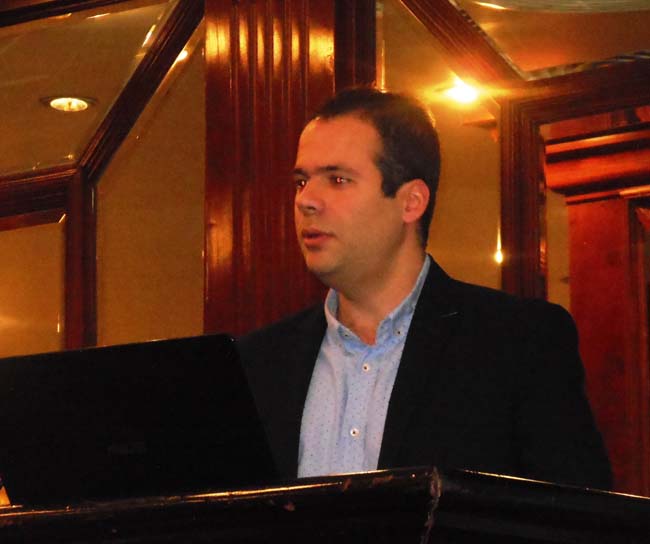
Augusto De Santis First, he mentioned the legal framework, which begins with Annex 13, the Aeronautical Code and several lower-level regulations, after which it defined the steps on which any investigation is based: notification of the event, protection and custody of aircraft and remains; Access of researchers; Coordination with judicial authorities; Notification of alleged crimes and confidentiality of information.
He made a detailed distinction between the JIAAC and Justice investigations, after which he described the systemic approach of his work, which starts from the latent pre-accident conditions and the defensive barriers that must be deployed to deal with them.
The last part of the exhibition was a detail of the phases that take place in the development of an investigation until arriving at the final report.The future
The last presentation was in charge of Dr. Marina Donato who, with a clear and disagreeable language, spoke of the inevitable transition that we must face to reach a future that is just around the corner.

Dr. Marina Donato She began with a very brief description of the ICAO system, based on basic principles of safety, protection, efficiency, effectiveness and sustainability, not only in terms of environmental protection but also industry profitability, and immediately described the challenges of The hour, which are, fundamentally, the following:
- Environmental protection, which requires alternative fuels, new operational procedures, more efficient aircraft design and market-based measures. At the 39th assembly a global agreement was reached for the adoption of the latter, which have already subscribed 66 states, which means 84% of traffic. The big question is the future attitude of the new US government, which is the country with the highest global pollution. Alternative fuels of plant origin, which could reduce emissions by up to 80%, are already being used on commercial flights, but for now they are very expensive (six times as much). The design of new aircraft is also on track, but its arrival will require several years.
- Infrastructure. There is a Copernican twist in urban design, which now designs cities from its airport, something that will improve connectivity, intermodality and decongestion. Airspace congestion is a problem still unresolved in many regions of the world that do not take advantage of the benefits of new satellite systems. There are also a number of novelties that favor the flow of traffic, such as passport and mechanical reading visa, the advance of personal data of passengers, and so on.
- Drones. They are aircraft with a great potential development, but there is still no clear regulation for its operation that should be a new ICAO Annex.
- New criminal figures. Cybernetic and missile attacks, the inclusion of toxic, explosive and chemical elements potentiate new illicit acts that have been addressed in a protocol that has not yet entered into force. Related to this is the figure of the questioned air marshals, security agents aboard the aircraft.
- Unruly passengers. It is a situation that tends to grow and is studying the updating of existing rules to “force” states to take action.
She emphasized that most legal instruments exist, but they have yet to be incorporated into the laws of many nations.
She then addressed the so-called open skies, arguing that markets must be opened in a progressive and gradual manner, respecting security and national needs and interests, because not all countries have the same degree of development. In our Latin American region there are countries with great openness (Chile, Uruguay and Paraguay), other intermediate (Bolivia, Ecuador), and finally there are protectionists like Venezuela and Argentina itself.
She emphasized that it is necessary to revise the definition of the nationality of an airline, currently based on the concept of substantial ownership and effective control of capital (a matter in the mathematical background), pointing to a much more flexible concept, which preserves what really It is worth preserving, demanding a genuine link between the state of the flag and the airline, materialized in an investment of capital in the country, hiring of local staff, payment of taxes and fees. This would avoid the ghost of complacency flags.
With regard to the issue of low cost, which worries and excites the Argentines, she made a quick description of the companies of this type, which she considered innovative for us, but not for Chileans or Colombians, noting that in Latin America, 35% of the international offer corresponds to this type of operators, a number that exceeds the United States.
The phenomenon, she said, means the emergence of an additional authority to the aeronautics, that is the one of consumer defense, that must watch over the possible commission of predatory practices and abuses of dominant positions.
She then emphasized the need to modernize legislation. ICAO recommended in 2000 to update the Argentine Aeronautical Code but we have not been able to overcome the challenge of updating a necessary law that can solve new problems. In addition, there are many international conventions ratified by the country that have not been incorporated into national law.
The end of this rich presentation was based on the need to act against growth projections in order to preserve the values of safety, efficiency and sustainability, both environmental and related to the profitability of the system.
In reference to Latin America, she said that the situation is deficient in many aspects and that the advances in security, technical and regulation are very modest. Due to lack of technology, the maximum value of aviation, which is celerity and connectivity, is wasted.
The last sentence was a quote from Seneca, which is two thousand years old, but which is absolutely topical in the aeronautical environment: If you do not know where you are going, no wind will be favorable.
Marcelo Sana, secretary of APADA, thanked everyone for their presence, and gave the floor to Russell Williams, the new president of IFALDA elected at the meeting, who congratulated the Argentine dispatchers for having obtained the professional license, emphasizing that this is a theme In which the organization has been working with ICAO for a long time, but it is also necessary to continue working on standards and training to take the profession further.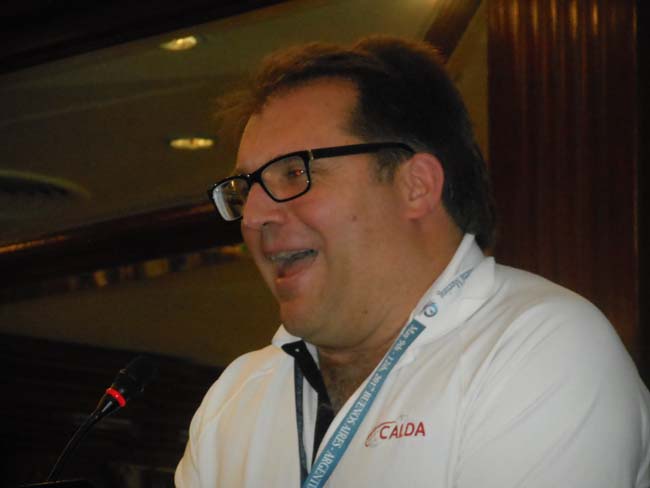
Russell Williams



